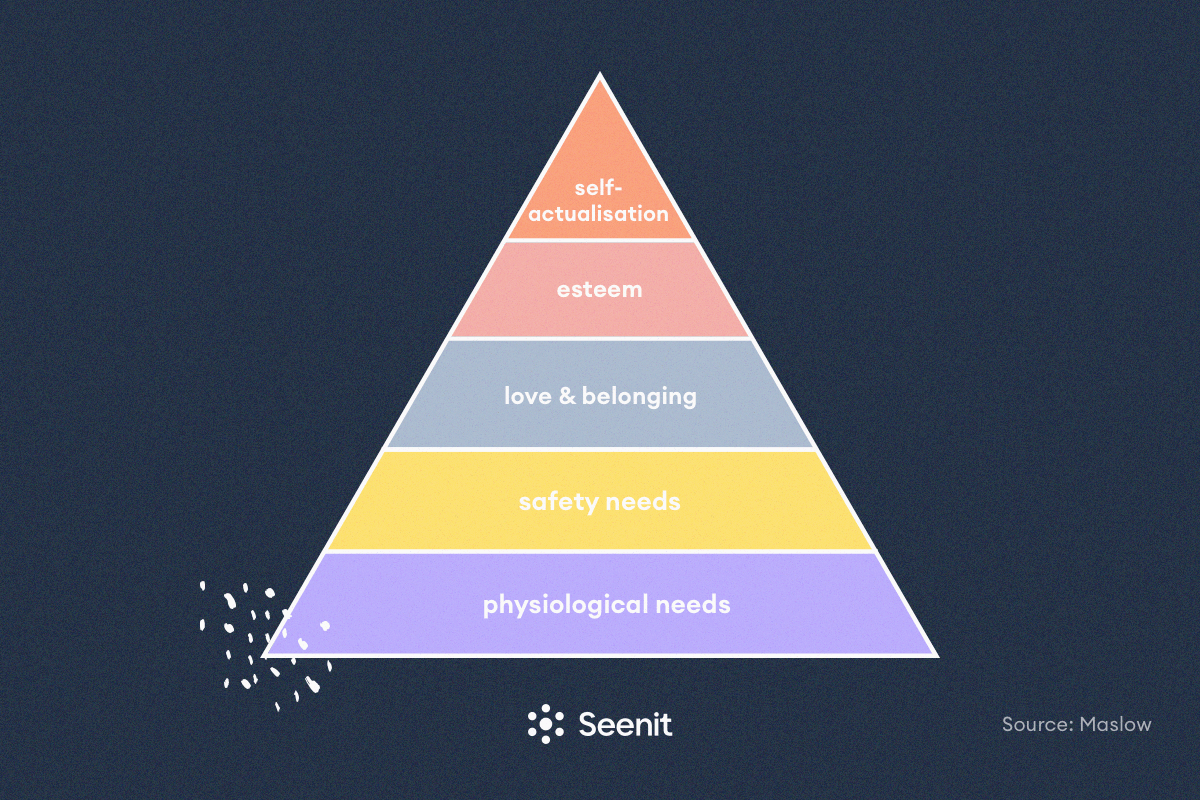Knowing what makes your employees tick is key to keeping them motivated. When motivation and morale are high in your workplace, your business will benefit from increased productivity, employee commitment and loyalty to increased customer satisfaction and profit.
Satisfied and motivated employees can increase productivity by as much as 12%. Understanding who is motivated by what can be challenging, but with just a third of people saying they feel engaged at work, motivation theory has never been so important. While there are several effective engagement ideas to keep teams motivated, many useful motivation theories have also been developed. These help employers understand what motivates their people and how to make the most out of it. Let’s explore motivation theories and how you can apply them to your business.
What is motivation theory?
Motivation theory looks at what drives people to work towards a specific goal, the decision-making involved and how it impacts actions and behaviours. It helps us understand what incentivises people, how a person’s behaviour influences others, what needs they want to fulfil through their actions and the difference between engagement and motivation. Rather than simply accepting motivation as a random human quirk, motivation theory uses a research-backed framework to understand what pushes people forward. Motivation theory essentially focuses on two key factors:
- Intrinsic factors: People are motivated by a desire to satisfy certain human needs, such as achieving personal or professional goals or pleasing their employer
- Extrinsic factors: People are motivated by external factors such as a bonus as a reward for their hard work or a sanction if they fail to meet their targets
Top 5 motivation theories to use in the workplace
Businesses can build on different motivation theories to create a working environment more conducive to nurturing enthusiasm and productivity. Here are the five most commonly used in the workplace:
1. Herzberg’s Two-Factor theory of motivation (or Motivation-Hygiene Theory)
Behavioural scientist Frederick Herzberg developed the Herzberg motivation theory in 1959. It was the result of interviews conducted with employees where he asked workers to think of a time they felt good and bad about their job and why. Herzberg concluded that two mutually exclusive factors influence employee satisfaction and dissatisfaction:
- Motivators: Recognition, perks and opportunities for advancement, which increase motivation, commitment and productivity
- Hygiene: Includes company policies, supervision, compensation and working conditions which contribute to consistent employee satisfaction when present and employee dissatisfaction when absent
Businesses can incorporate elements of Herzberg’s motivation theory into company policy to increase motivation and hygiene by giving employees more autonomy over their work, providing regular employee feedback, improving working conditions and continuously reviewing employee welfare.
2. Maslow’s Hierarchy of Needs
Psychologist Abraham Maslow published the hierarchy of needs in 1943 in his paper, “A Theory of Human Motivation”. The Maslow motivation theory outlines the five key tiers of human needs, represented by a pyramid:
- Self-actualisation: A person’s ability to reach their full potential
- Esteem: Recognition, status, self-esteem and respect
- Love and belonging: Friendships, family, intimacy and a sense of connection
- Safety needs: Personal security, resources, employment, health, property
- Physiological needs: Air, food, water, shelter, clothing, sleep, reproduction

People typically strive to achieve their basic needs first, such as food, water and shelter, and these form the bottom of the pyramid. They then move up to the next pyramid tier until reaching the very top.
The most important takeaway for an employer is that the basic needs must be in place before anything else. Each tier is built on the other, so employers should first concentrate on meeting the base requirements. Ensure that everyone is adequately paid and has safe working conditions and job security. Then, consider ways to make work more rewarding through job enrichment, cross-training and special projects.
We’ll deliver our latest content straight to your inbox
3. McClelland’s Three Needs Theory
Harvard professor David McClelland spent three decades researching motivation to understand human nature and develop tools to measure how people make certain choices.
He theorised that humans have three types of emotional needs: achievement, affiliation and power. While he determined that one trait is often more dominant than the others, people can have any mix of these needs and their motivations are influenced by the combination and strength of their specific needs.
McClelland also studied how motivation affects a person’s health by causing stress, high blood pressure and abnormal hormone levels. The Three Needs Theory is often used in business to create personality tests to determine what motivates employees. It also helps managers learn more about individuals in their team and what each person needs from their workplace.
Need for achievement
If a person’s primary objective is achievement, they are motivated to do better and are focused on winning at any cost. Entrepreneurs typically have the drive to be successful, exceed expectations and outdo their peers.
Need for affiliation
People whose main motive is affiliation are typically motivated by social connections. They are keen to please others, fit in and value relationships with their peers. They tend to appreciate familiar situations and are unlikely to want to leave their work location. These people don’t usually like working alone and will do anything to avoid disappointing their managers and colleagues.
Need for power
When a person’s predominant motive is power, they are motivated to exert influence over others and be in control. Power-motivated people are best suited for leadership positions as they are driven to motivate others and delegate responsibility. They are also keen to climb the corporate ladder in pursuit of success, recognition and wealth.
To use McClelland’s motivation theory, determine what drives your employees by asking them for feedback.
4. Taylor’s motivation theory (Scientific Management)
Taylor’s motivation theory was established in 1909 by Frederick Winslow Taylor after the publication of The Principles of Scientific Management. It explored the belief that optimising the way people work was more efficient than making them work as hard as possible. Taylor was very interested in efficiency and suggested that simplifying tasks and better cooperation between workers and managers would increase productivity. His various workplace observations led to him developing four principles of scientific management:
- Employers should study working practices to devise the most efficient way to perform tasks.
- Workers should be matched to jobs based on motivation and ability and receive appropriate training to help them work efficiently.
- Regularly monitor performance and provide appropriate supervision and instructions to ensure employees use the most efficient working methods.
- Divide tasks among managers and workers so managers can spend time planning and training to enable workers to perform their tasks efficiently.
To implement Taylor’s motivation theory, start by breaking down large projects into smaller subtasks, delegating responsibilities, dividing work among managers and workers and providing effective training where necessary. You also must regularly monitor your employees and evaluate their work effectiveness.
5. Mayo’s Theory of Management
According to Professor George Elton Mayo and his management theory, workers are motivated far more by interpersonal factors, such as camaraderie, than by environmental factors or monetary rewards. In the 1920s, Mayo carried out various workplace experiments that showed job satisfaction was hard to achieve through short-term incentives.
Instead, positive relational factors such as strong teamwork were much more effective in boosting productivity and job satisfaction. Mayo created a matrix to demonstrate how successful a team would likely be.
The matrix illustrates the role that different combinations of group norms and cohesiveness play in the effectiveness of a team. Mayo’s theory identifies a “norm” as the degree to which a group of people encourages positive or negative behaviours. Typically, this is expressed through workplace policies or employee handbooks and includes informal and formal rules. Group cohesiveness refers to how well a group works together and overall camaraderie. The key team positions identified by Mayo are:
- Low norm and low cohesiveness: Teams like this are usually ineffective, with low motivation and little or no productivity among members.
- Low norm and high cohesiveness: These groups of workers tend to have high camaraderie among members and minimal structure. Group members often encourage each other’s negative behaviour, hindering productivity.
- High norm and low cohesiveness: These teams have a small positive impact on productivity, achieved through individual accomplishments. Each team member maintains a high standard of work but doesn’t cooperate as part of a team or work towards a team goal, only their own.
- High norms and high cohesiveness: This group of employees has the most significant positive impact on the productivity of each member. Everyone supports each other and works together towards a group goal to achieve success.
To apply Mayo’s theory of motivation effectively, focus on creating positive relational factors within the workplace. Do this by encouraging employees to work in teams or groups, taking a greater interest in your employees’ working lives and improving the two-way communication between managers and employees.
Pros and cons of motivation theories
Motivation theories provide valuable insight into what makes people tick. Managers can use these theories to identify the best people to assign certain tasks based on their needs. The theories also highlight the problems many employees experience and enable employers to identify and minimise anything that may stand in the way of motivation.
However, there’s no single approach that works for everyone. For some, financial reward is the most important driver, while others are more motivated by the actual job or learning new skills. Likewise, incentives can be a powerful motivator, but those same incentives may not work for others. There’s also the risk of keeping certain workers in their comfort zone and only giving them tasks they’re comfortable with, giving them little chance to develop.
Maintaining motivation in the workplace is essential to the success of any organisation. Motivation theories provide a good foundation for employers to build practices that effectively support their team and improve engagement and motivation.




